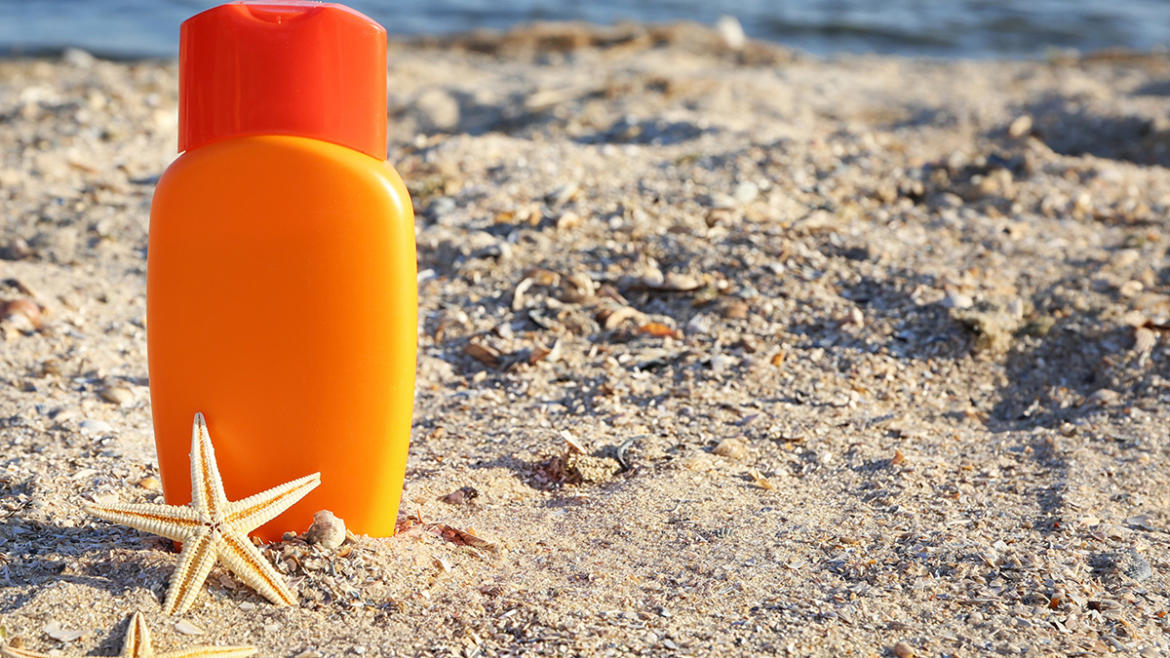What are ultraviolet rays?
The sun emits three types of rays, UVB, UVA, and UVC. Zero percent of the sun’s UVC rays reach the earth’s surface because they are filtered out by the ozone. Three percent of the sun’s shorter UVB rays reach the earth, enough to cause concern. And 95 percent of the sun’s longer UVA rays penetrate into the earth. The difference between the two rays? In general, the UVB rays are the rays that burn you and are more evident on the bright days, and the UVA rays are the rays that age you and are present always, even on cloudy days. Both rays are a concern for skin cancers. However, the UVA rays, being longer rays, actually penetrate deeper into the skin, breaking down collagen and elastin, which leads to premature aging and, more important, to a greater risk of developing melanoma. Since UVA rays are present always, even passing through glass, sunscreen should be applied each and every day to prevent their penetration and effect.
What’s on the label?
When we reach for a sunscreen, there are several aspects of the label that we need to understand. First is the term “broad spectrum.” This is one of the new FDA requirements, and it indicates that the sunscreen protects against both the UVA and UVB rays. Next is the term SPF, or Sun Protection Factor, which protects against the UVB rays only.
Another new FDA regulation is an SPF limit to a rating of no more than 50. You won’t find sunscreen in the United States with an SPF rating of above 50 because studies have shown that there is no greater sun protection with higher rated SPF.
The SPF is considered a chemical blocker and is not a measure of effectiveness but an indicator of the time each individual user may stay in the sun without getting burned. For instance, if someone can stay in the sun only ten minutes before getting red skin then a sunscreen with an SPF 15 will allow him or her to stay in the sun 15 x 10 minutes or 150 minutes before getting red or burned. Picking the right SPF is very individualized, based on skin type and specific activities. A general rule is to apply a sunscreen with an SPF of 30 on a regular working day when you are indoors; for the outdoor activity days, reach for the SPF 50.
If SPF only protects against the UVB rays, what protects against the UVA rays?
The answer—ingredients called physical or mineral blockers, such as zinc oxide or titanium dioxide. These will prevent the UVA and UVB rays from actually penetrating the skin by reflecting them away from the skin’s surface. Studies have shown that the best physical blocker is zinc oxide, although others are FDA approved as well. These physical barriers, as well as an SPF of at least 15, are required for sunscreens to be considered “broad spectrum.”
Claims of sunscreens being “waterproof” or “sweat proof” are now prohibited. The term “water resistant” is allowed only if it can pass strict testing, and the term pertains to how long the sunscreen re-mains effective after swimming or sweating. Because of the stricter regulations, the claim is being seen less often on sunscreens.
Sunscreens are now considered FDA-regulated, and therefore every label must include standardized “drug facts”, just as any other FDA-regulated product does.
How much and how often?
Knowing which sunscreen is right for you is important, but the application technique and dosage are just as important. The dosage of sunscreen that should be applied is 2 mg/cm2, which is approximately one ounce for the average person’s body. Most experts suggest that sunscreens be applied 15 minutes before going outside. Don’t wait until you get to the beach to apply sunscreen, especially on children. Sunscreen should be reapplied two hours after sun exposure, if not sooner, to remain effective, and each time after swimming or sweating.
Healthy living is the key to longevity. Cancer-causing rays change the DNA in your skin, which leads to non-melanoma skin cancers, such as basal and squamous cell, that effect over one million Americans annually. They also play a significant role in the fatal skin cancer, melanoma, which kills over 8,000 Americans each year, and according to the American Academy of Dermatology, these numbers are on the rise. However, using the proper sunscreen everyday will help reduce the risk.
Remember to take the time to read the entire label on the sun-screen bottle to help you pick the right sunscreen and be sure to use it every day. Also, make sure to have a body check by your dermatologist each year, pointing out any new changes you may have noticed on your skin. Live life to the fullest and enjoy the outdoors, but do it wisely.
About the Author
Michael Scognamiglio, M.D. has been a Saddle River resident since 1989. At Scognamiglio began his career in Anesthesiology when he received his medical degree from SUNY School of Medicine at Stony Brook. He went on to complete an internship in General Surgery, followed by an Anesthesiology residency and fellowship at Columbia-Presbyterian Medical Center in New York. He was Board Certified in Anesthesiology in 1985. In October of 1986 he was appointed to the Medical Staff of Valley Hospital in Ridgewood, NJ, where he practiced anesthesiology until his retirement in August 2014. During his 29-year career at Valley Hospital, he held numerous leadership positions including 8 years as Department Director, 8 years as Associate Director, and 4 years as Medical Director of Anesthesiology Services at the Luckow Pavilion Ambulatory Surgery Center. In 2006, he co-founded the Elizabeth Roche MD MedSpa along with Dr. Elizabeth Roche.
This article was originally published in Saddle River Magazine – June 2018

